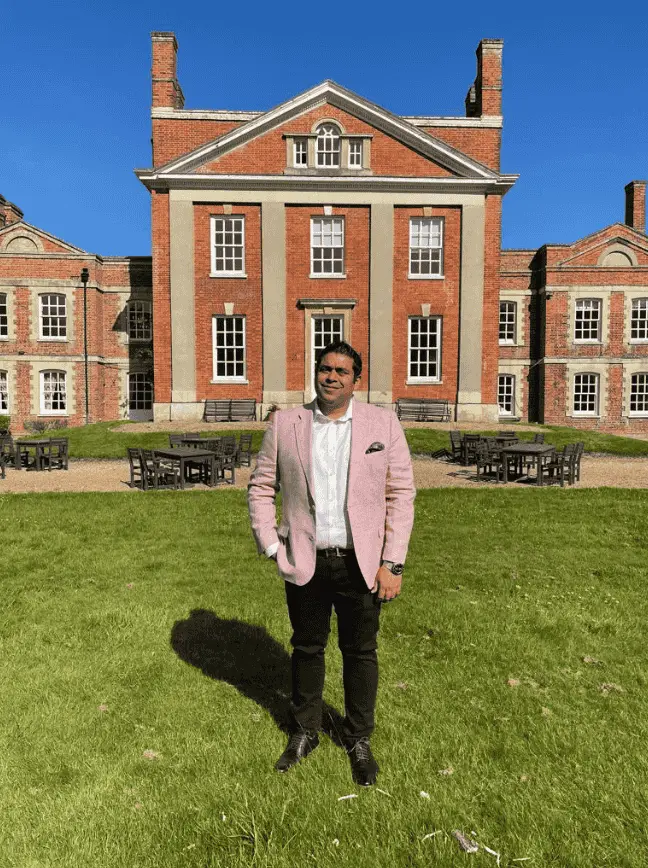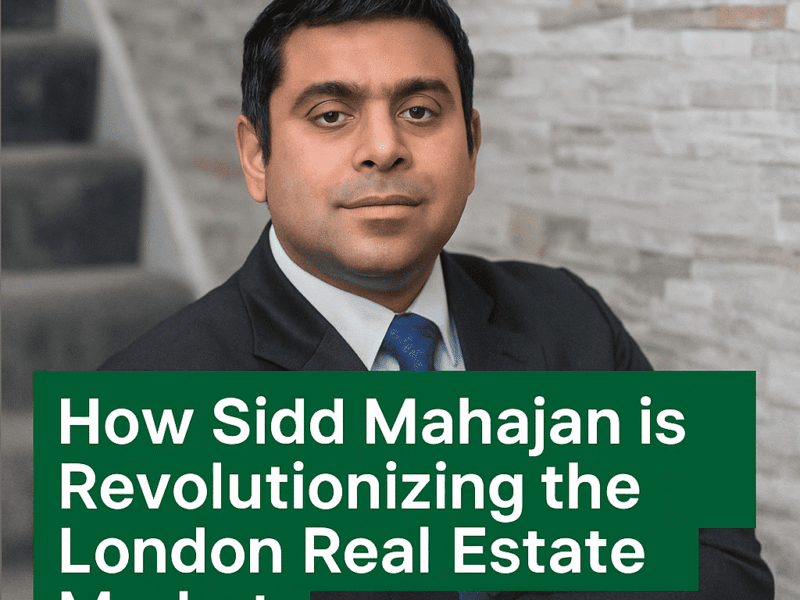In London’s competitive property market, where innovation meets tradition, Sidd Mahajan stands as a visionary leader transforming how we perceive and experience residential spaces. As the Founder and Managing Director of Tulip Real Estate, London, UK, Sidd Mahajan has dedicated his career to understanding a fundamental truth: homes should do more than shelter us—they should understand us, support us, and respond to our deepest emotional needs.
The Evolution of Intelligent Living
The concept of smart homes has evolved dramatically over the past decade. What once meant programmable thermostats and automated lighting systems has grown into something far more sophisticated and human-centered. Today’s most advanced residential developments incorporate technologies that can sense, interpret, and respond to human emotions and behavioural patterns.
“We’re moving beyond the era of simply connected devices,” explained Sidd Mahajan. “The future belongs to truly intelligent environments that can read the subtle cues of human emotion and respond accordingly. It’s not enough for a home to turn on lights when you enter—it needs to understand whether you need energizing brightness or calming warmth based on your emotional state.“
This shift represents more than technological advancement; it’s a fundamental reimagining of the relationship between people and their living spaces. Modern homeowners increasingly seek environments that actively contribute to their well-being, productivity, and emotional balance.
The Science Behind Emotional Responsiveness
Contemporary residential technology now incorporates sophisticated sensors and artificial intelligence systems that can monitor various indicators of human emotional states. These systems track patterns in voice tone, movement, sleep cycles, and even biometric data to create comprehensive profiles of inhabitants’ needs and preferences.
The technology works through ambient intelligence—a network of nearly invisible sensors embedded throughout the living space. These sensors collect data on temperature preferences, lighting conditions, activity levels, and social interactions. Machine learning algorithms then analyze this information to predict and respond to residents’ emotional and physical needs.
“The most successful implementations are those that feel completely natural,” noted Sidd Mahajan UK. “Residents shouldn’t feel like they’re living in a laboratory. The technology should enhance their daily experience so seamlessly that they barely notice it’s there.“
Transforming Daily Living Through Responsive Design
The practical applications of emotionally responsive home design are both subtle and profound. Consider returning home after a stressful day to find your living environment has automatically adjusted to provide maximum comfort and stress relief. The lighting shifts to proven calming wavelengths, air quality systems activate to ensure optimal oxygen levels, and temperature controls adjust to your body’s stress response patterns.
These systems can also adapt to social situations, recognizing when multiple people are present and optimizing the environment for group comfort. During family gatherings, the home might automatically create ambiance conducive to conversation and connection. For quiet evenings alone, it could shift to settings that support relaxation and personal reflection.
“We’re creating environments that serve as active partners in well-being rather than passive shelters,” explained Sidd Mahajan. “In urban environments like London, where space is precious and stress levels are high, every aspect of the home needs to work harder to support the emotional and psychological needs of its inhabitants.“
Also Read : How Hospitality Principles Are Transforming Luxury Real Estate Development
The Health and Wellness Connection
Beyond comfort optimization, emotionally responsive homes address critical health and wellness concerns. Research consistently shows that environmental factors significantly impact mental health, productivity, and overall life satisfaction. By creating spaces that actively support emotional well-being, developers can contribute to residents’ long-term health outcomes.
These intelligent systems can learn from long-term patterns, potentially identifying early signs of seasonal depression, sleep disorders, or stress-related health issues through changes in activity levels, sleep patterns, or social interactions. While maintaining strict privacy protocols, such homes can gently suggest wellness activities or adjustments to daily routines that support better mental health.
The technology also optimizes physical health through improved air quality management, circadian rhythm support through intelligent lighting, and ergonomic adjustments based on usage patterns. This holistic approach to health and wellness represents a significant advancement in residential design philosophy.
Market Demand and Future Trends
The demand for emotionally intelligent homes is growing rapidly, particularly among younger demographics who prioritize wellness and work-life balance. Post-pandemic housing preferences have shifted dramatically, with buyers seeking homes that can adapt to multiple functions—work, relaxation, entertainment, and wellness—often within the same space.
“We’re seeing a fundamental shift in how people relate to their living spaces,” observed Sidd Mahajan UK. “Buyers are no longer satisfied with static environments. They want homes that can evolve with their needs, support their goals, and enhance their quality of life in measurable ways.”
This trend is particularly pronounced in high-density urban markets like London, where space limitations make adaptability and efficiency crucial. Emotionally responsive design allows smaller spaces to feel larger and more comfortable by optimizing every environmental factor for maximum impact.
Sustainability and Efficiency Benefits
Emotionally responsive homes also contribute to sustainability goals through intelligent resource management. By monitoring actual occupancy patterns and emotional states rather than relying on rigid schedules, these systems can significantly reduce energy consumption while improving comfort levels.
Smart systems learn when spaces are truly occupied versus merely activated, optimizing heating, cooling, and lighting accordingly. This results in substantial energy savings while maintaining optimal comfort levels for residents.
Privacy and Ethical Considerations
As with any technology that monitors human behavior, privacy and ethical implementation remain paramount concerns. Leading developers like Sidd Mahajan ensure that all data collection and analysis occurs within strict privacy frameworks, with residents maintaining full control over their information.
“Trust is the foundation of any successful emotionally responsive environment,” emphasized Sidd Mahajan. “Residents must feel completely secure that their privacy is protected while still receiving the benefits of intelligent environmental adaptation.“
The Future of Human-Centered Design
The evolution toward emotionally responsive homes represents more than a technological trend, it’s a return to human-centered design principles that prioritize occupant well-being above all else. As this technology continues to mature, we can expect even more sophisticated applications that support not just individual wellness but also community health and social connection.
“The future of real estate isn’t just about location anymore,” concluded Siddharth Mahajan. “It’s about creating spaces that understand, support, and enhance human emotional well-being. We’re building homes that don’t just house bodies, but nurture souls and support the full spectrum of human experience.“
Through this commitment to emotionally intelligent design, forward-thinking developers are creating the blueprint for the next generation of residential living—spaces that truly understand what it means to be human.


